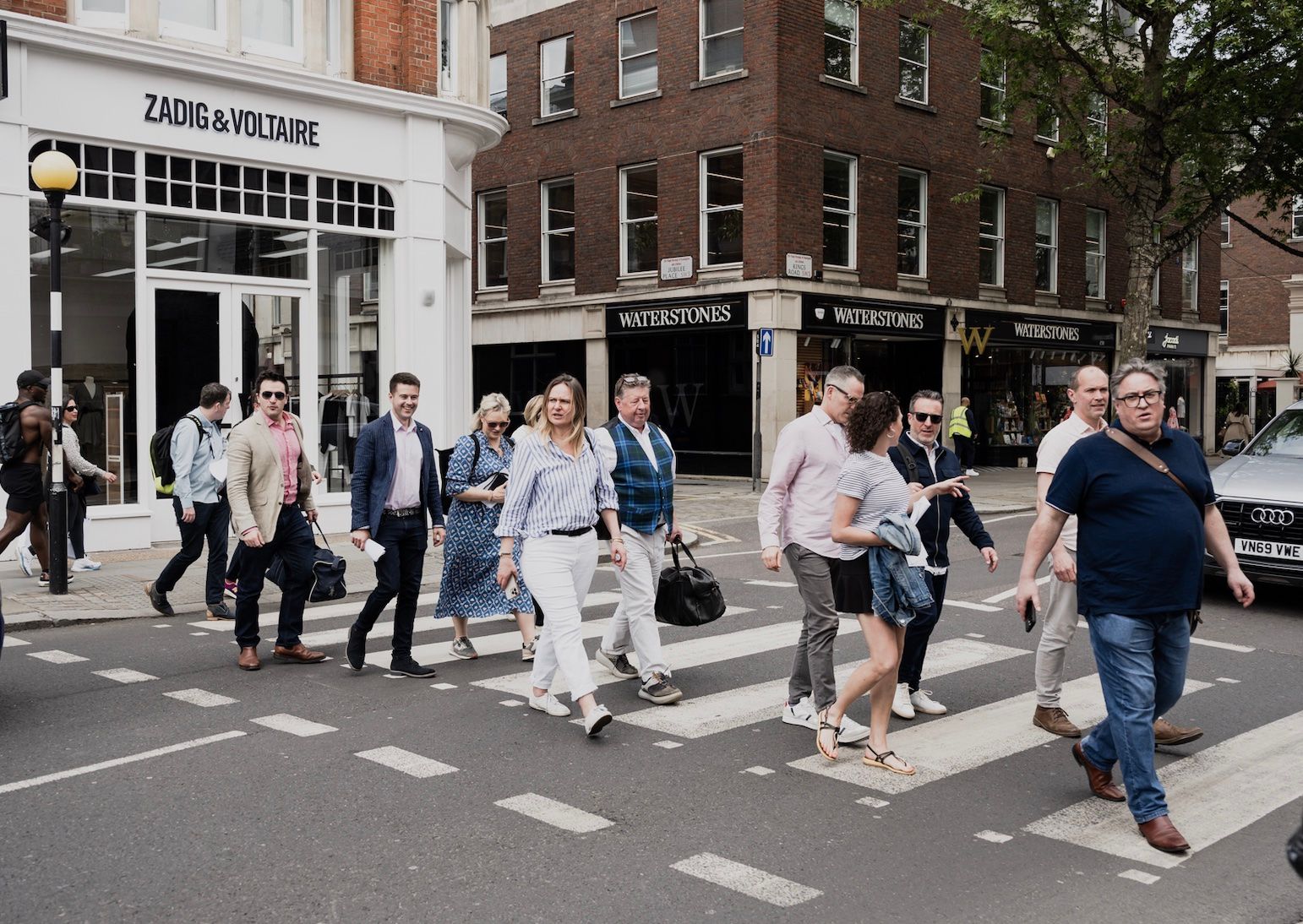To best showcase how well Provence rosé wines can match and pair up with different styles of cuisine, The Buyer and Vins de Provence teamed up with three restaurants serving creative cuisines that would showcase the wines’ exceptional versatility, venues that could challenge and inspire Provence rosé wines at the same time, offering the chance to see how Provence rosé performs against different ingredients carefully selected from our partner restaurants.

The Rosé Restaurant Tour was a chance for leading wine figures to try different styles of Provence rosé against different cuisines
A selection of six wines were chosen for each of the restaurants that took part in the tour. Wines included cuvées from the 2023 vintage as well as oaked and older vintages, to illustrate the diverse and abundant pairing possibilities of Provence rosé. We deliberately didn’t choose a French restaurant to show this versatility, to demonstrate that there was a place for Provence rosés wines on all restaurant wine lists, whether as an aperitif or alongside a meal, showing the buyers how Provence wines fitted into their customers’ environments.
The Restaurant Partners
In each restaurant the buyers had the opportunity to try a selection of wines that had been specifically chosen to complement the dishes from that restaurant. Our thanks go to each of the restaurants and venues that took part in the restaurant tour. For the wines and dishes served at each restaurant check the first part of our report here. The three restaurants were:
Rabbit
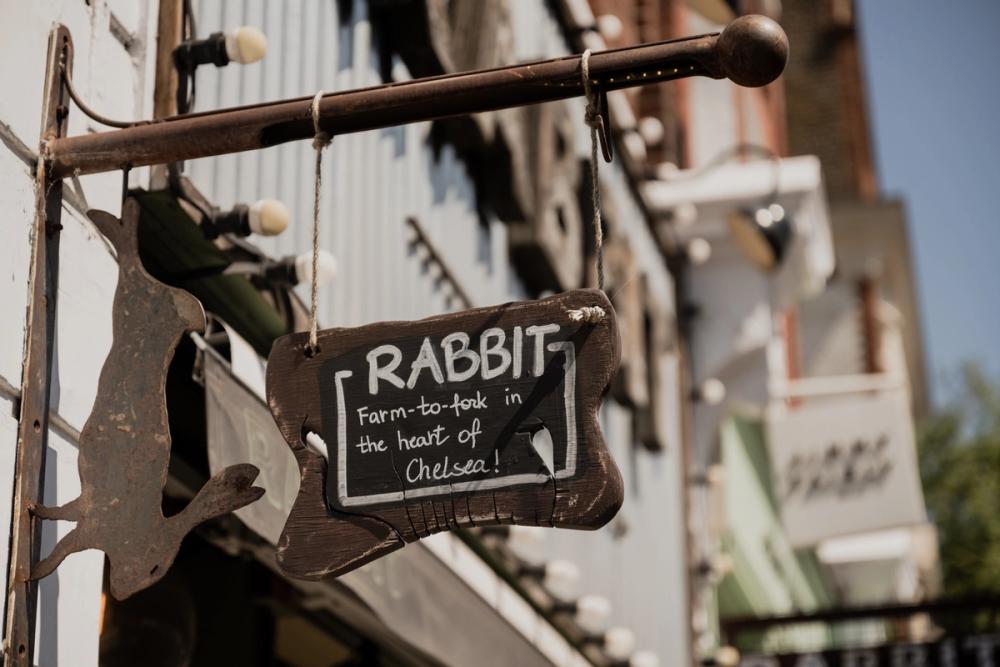
172 Kings Road Chelsea
London, SW3 4UP
www.rabbit-restaurant.com
Rabbit is a farm-to-fork neighbourhood restaurant focusing on sustainability that looks to capture the English countryside's flavours, freshness, and vibrancy with many of its produce, ingredients and meat coming from its own family farm in West Sussex.
Wines tasted at Rabbit
Château de St Martin, Grande Réserve Cru Classé, Côtes de Provence 2023. RRP £26.
Château d'Esclans, Rock Angel, Côtes de Provence. RRP £20.99.
MDCV, Terres de Berne, Côtes de Provence, 2023. RRP £16.
Château Pigoudet, Château Pigoudet Classic, Coteaux d'Aix-en-Provence 2023. RRP £20.
Domaine St Jean de Villecroze, Selladore, Coteaux Varois en Provence 2023. RRP £19.
Château Calissanne, Calisson de Calissane, Coteaux d'Aix-en-Provence 2023. RRP £10.
Rabbit dishes paired with the wines
Trout Mousse cornetto
Somerset Goat’s Cheese Mousse Eclair, South Downs Honey
London Buratta, honey charred Radicchio, biodynamic pear vinaigrette
Grilled Asparagus, crispy duck egg, lemon sumac
Chicama
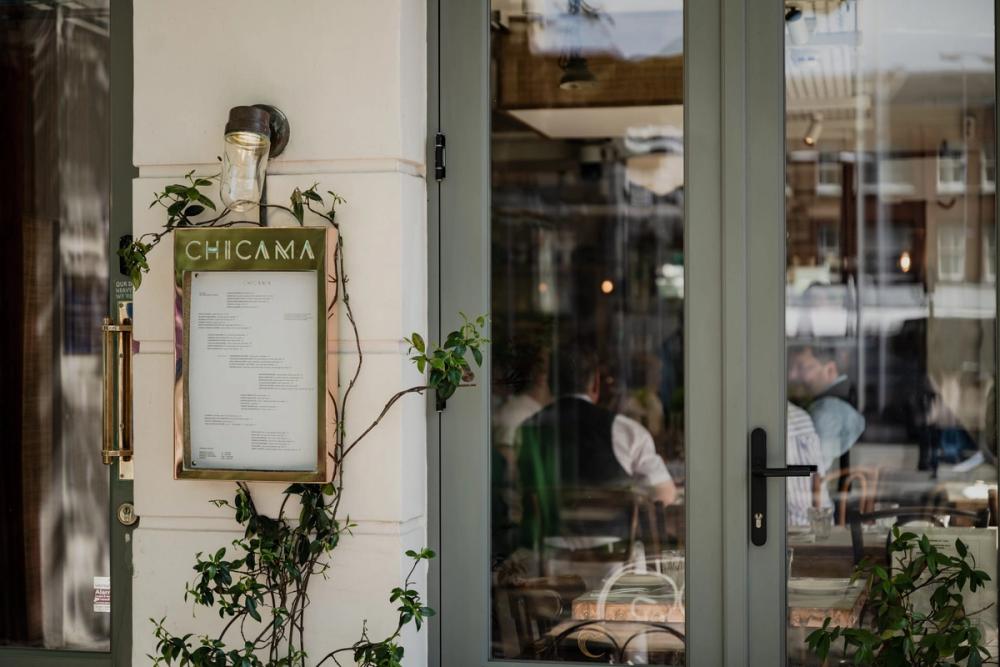
383 King's Rd, London SW10 0LP
Chicama is part of the Pachamama Group and is centred on exploring the coastal cuisine of Peru and enhancing it through more contemporary techniques and flavours. Its main focus is on seafood, seasonal vegetables and creating Peruvian inspired dishes.
Wines tasted at Chicama
Minuty, Prestige, Côtes de Provence, 2023. RRP £24.95.
Mas de Cadenet, Grande Garde Rosé, Côtes de Provence Sainte Victoire, 2021. RRP £31.
Gilardi Le Vin Ensoleillé, Esprit de Buganay, Côtes de Provence 2023. RRP £9.99.
Château Paradis, Coteaux d'Aix-en-Provence, 2023. RRP £14.49.
Bastide de Fave, Coteaux Varois en Provence 2023. RRP £14.90.
Domaine ODDO Vallon des Glauges, Domaine Oddo, Coteaux d'Aix-en-Provence 2023. RRP €11.25.
Chicama dishes paired with the wine
Grilled corn ribs
Grilled seafood platter - wild white prawns, octopus, scallops, soft shell crabs
Black ink squid
Otoro Limoise salad
HUŎ
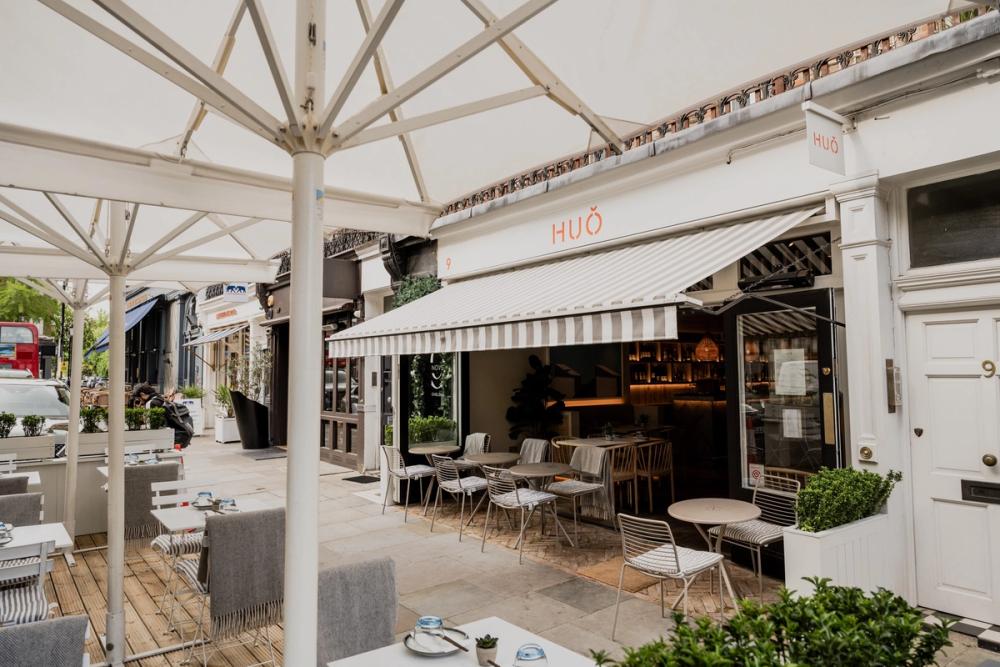
9 Park Walk, London, SW10 0AJ
HUŎ bar & restaurant offers a wide range of clean, fresh and healthy Asian food encompassing carefully selected dishes from around China and Southeast Asia, all prepared from scratch using traditional Chinese, Thai, Malay and Singaporean disciplines.
Wines tasted at HUŎ
Château Sainte Roseline, Lampe de Méduse Cru Classé, Côtes de Provence 2023. RRP £19.
Maison Mirabeau, La Réserve, Côtes de Provence. RRP £25.90.
Figuières, Confidentielle, Côtes de Provence La Londe, 2021. RRP. £19.95.
Figuières, Magali, Côtes de Provence, 2023. RRP. £14.48.
Château Bellini, Coteaux Varois en Provence, 2023. RRP £19.45.
Wines Tree, Baron M Jardin d'Amour, Coteaux d'Aix en Provence. RRP £12.99.
HUŎ dishes paired with the wine
Chicken Lettuce Wraps
Duck Salad with watermelon and cashew nuts
Spicy Hunan pork dumplings
Miso Aubergine, noodle and cucumber salad
What the buyers thought
Juliet Doughty, head sommelier, Elystan Street

What was your perception of Provence rosé before the tour in terms of its diversity, versatility and quality?
The diversity in which I thought about Provence rosé was more regarding price point and less regarding regionality. I knew that there were different regions to Provence, but never really thought about how they are stylistically different. I think I have always been aware that quality wise there are many differences to Provence rosé, entry and more premium prices, but geographically less so. That was interesting. I have always been aware of wines like Garrus, therefore understanding that high price point wines do exist.
Did that change at all after tasting so many wines during the day? If so how?
Absolutely, it changed. Having Ray (O’Connor) there to talk in so much depth about the different regions and stylistic differences was a big help. It was also great being able to taste the regions and styles side-by-side and the price points too. I came to understand the differences you find in Provence rosés, looking for the leaner more precise expressions coming from the Côtes de Provence and the slightly more rounder expressions coming from the Coteaux d’Aix-en-Provence and Coteaux Varois en Provence.
What do you see as Provence rosé's big point of difference and what it should look to build on?

Juliet Doughty was able to share her experiences selling Provence rosé in a Michelin star restaurant at Elystan Street
I think Provence is a brand in itself. If people hear the word ‘Provence’ they don’t think of a region in the south of France, they think of slight-coloured, elegant rosé and probably the summer.
I think Provence needs to change that, showing that their wines are not all about patios and sipping in the sun they can be gastronomic and serious wines with texture and complexity and layers. Provence has created a very powerful ‘brand’ it has created recognition of a very specific style of wine and it has done it very successfully, but now I think it needs to create the brand to be an all year round and work to make it the food wine that it is in its own region in France.
Does it need to do more to explain the complexities and the differences there are between the different appellations and styles of wine?
Yes absolutely, I have my level 4 WSET and I didn’t know the appellation differences. I think teaching through the WSET would be a really good way of attaining this. I also think making the regions on the label more specific and clearer. Also more education to people that work in the wine industry so they can pass this on to general public.
[The CIVP is currently working on an educational programme for the trade in France and abroad, with a particular focus on sommeliers.]
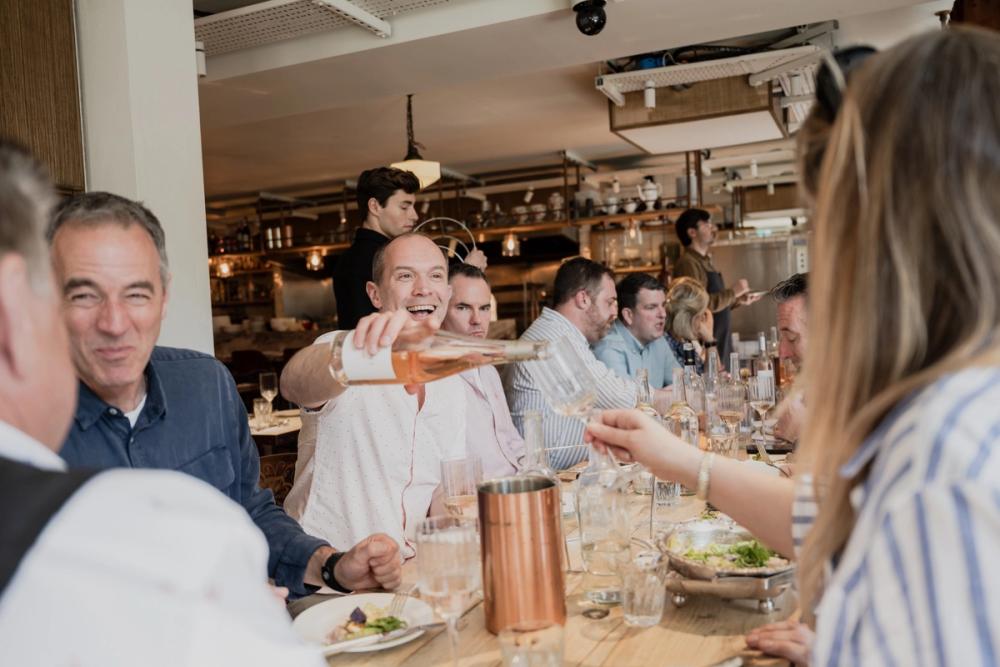
Ray O'Connor MW was able to share his insights into Provence rosé in his role as an ambassador for the region's wines
Are you more likely to list and talk about Provence rosé wines as a result of being on the tour - and if yes which styles in particular?
Yes, definitely the region and appellation differences also I will continue to use it for pairings on tasting menus, to push the wine gastronomically.
Which food and wine matches did you think were particularly successful?
I think Asian food and rosé worked really well, which I haven’t thought that much of before, but a touch of spice works really well.
What did you think of the restaurant tour concept?
I thought it was fantastic, such a great way to get a group of people talking about a region and all the wines from it. I thought it was great seeing how the wines worked with food. I think it was great having Ray there to steer the educational and factual points of Provence. It was a great day and I learnt a huge amount as well as discover new wines as well as network with industry people as well as try different wines with different food and discover new pairings and ideas for pairings. Also discovering new restaurants. A fantastic concept and such great fun.
Ian Wharton, head sommelier Scott’s of Richmond
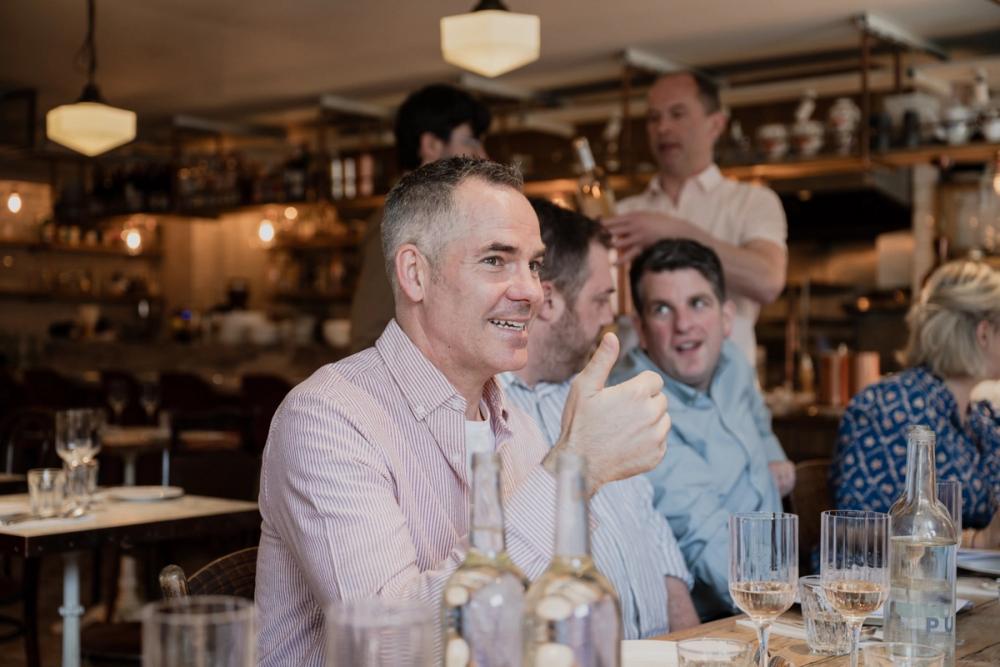
What was your perception of Provence rosé before the tour in terms of its diversity, versatility and quality?
I definitely thought that the majority of Provence rosés were only differentiated by the brand and marketing dollars that supported them. With that being said, I think that quality across the board is very good and the wines are very food friendly.
Did that change at all after tasting so many wines during the day? If so, how?
To a certain degree yes. It was great to hear how much effort has been put into research across the entire region. I still believe that there is a ceiling on how good the wines can get.
What do you see as Provence rosé's big point of difference and what it should look to build on?
I think Provence rosés show great consistency and are almost always good food pairing wines.
Does it need to do more to explain the complexities and the differences there are between the different appellations and styles of wine?
In short, yes. I like the idea of having DGCs with stylistic differences and strict control to protect the identity of each of the appellation. Also, as DGCs are still new to me as an industry professional, I believe there is a long way to go before they are accepted by the general public.
Are you more likely to list and talk about Provence rosé wines as a result of being on the tour - and if yes which styles in particular?
I’m currently under contract to certain wines, but the tour definitely introduced me to the number of producers that I was unfamiliar with and would be happy to work with in the future. I was impressed with many of them.

Ian Wharton and Ray O'Connor MW
Are you more likely to list and talk about Provence rosé wines as a result of being on the tour - and if yes which styles in particular?
I’m currently under contract to certain wines, but the tour definitely introduced me to the number of producers that I was unfamiliar with and would be happy to work with in the future. I was impressed with many of them.
Dan Whine, senior manager for BWS at Zapp

What was your perception of Provence rosé before the tour in terms of its diversity, versatility and quality?
Despite my working in the industry, I must confess that I often overlooked the depth and versatility of Provence Rosé. Typically relegated to the status of a simple, seasonal aperitif in my mind, making it somewhat challenging to present it to customers as anything beyond that. This perception was further reinforced by the dominance of big brands and the strong influence of marketing-driven consumer demand.
Did that change at all after tasting so many wines during the day? If so how?
Absolutely. The experience of sampling an extensive selection of Provence rosé, each paired with a variety of cuisines, was truly eye-opening. It illuminated the remarkable diversity and exceptional gastronomic potential inherent in Provence rosé, challenging my preconceived notions and expanding my appreciation for this elegant wine style.
What do you see as Provence rose's big point of difference and what it should look to build on?
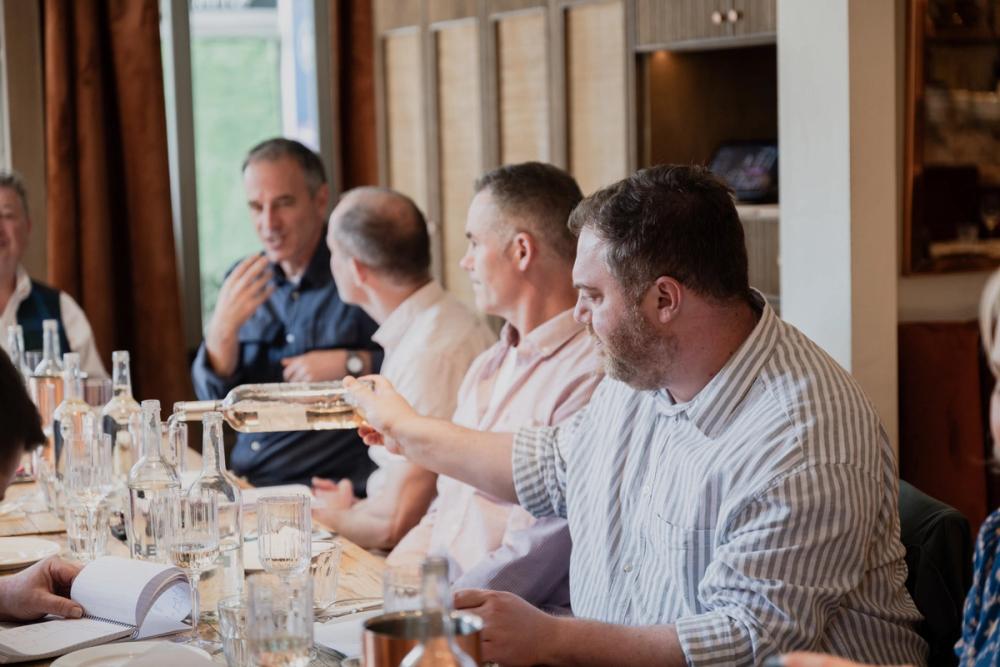
Dan Whine says Provence rosé is one of the best performing wine categories on Zapp
Provence rosé possesses a unique allure that sets it apart from other wine regions. It has an unparalleled ability to transport the imbiber to its picturesque birthplace, where the sun-drenched vineyards, gentle sea breezes, and fragrant lavender fields converge to create an idyllic setting. This aspirational quality, coupled with its elegant simplicity, forms the core essence of Provence rosé. Moving forward, the focus should be on preserving and enhancing this distinctive identity, while also exploring avenues for innovation and sustainable growth within the industry
Does it need to do more to explain the complexities and the differences there are between the different appellations and styles of wine?
While Provence rosé is renowned for its elegance and charm, there's often a lack of clarity regarding the intricate variations between appellations and styles. By providing more comprehensive information about the diverse terroirs, grape varieties, and winemaking techniques employed across the region, Provence rosé can enhance consumer understanding and appreciation. Greater emphasis on educational initiatives could empower consumers to make more informed choices, ultimately elevating the entire category.
Are you more likely to list / talk about Provence rose wines as a result of being on the tour - and if yes which styles in particular?
Certainly. The immersive experience of the tour broadened my perspective on Provence rosé, making me more inclined to discuss and recommend it to customers. In particular, I'm drawn to the diversity of styles offered by Provence rosé, from the crisp and refreshing to the more complex and structured. Each style has its own unique character, making them suitable for various occasions and preferences. I would be more inclined to highlight the versatility of Provence rosé and showcase different styles based on customers' preferences and the context of the occasion.
What price points do you think work best for Provence rose and can it look to be charging more?
Provence rosé has established itself as a premium category, and consumers are often willing to pay a premium for its quality and reputation. While there's certainly demand for wines at various price points, ranging from affordable everyday options to higher-end bottles for special occasions, Provence rosé should continue to focus on delivering exceptional value at every price level. However, there may be opportunities for certain producers to command higher prices, especially for limited-production or highly sought-after releases. Ultimately, the key is to maintain a balance between quality, affordability, and perceived value in order to sustain the category's growth and appeal.

Jumping on buses and walking down London's Kings Road was all part of the Rosé Restaurant Tour
What did you think of the restaurant tour concept?
The restaurant tour concept was a brilliant way to showcase Provence rosé in different settings and contexts. It provided a unique opportunity to explore the wine's versatility and suitability across various cuisines and dining atmospheres. Additionally, the interactive nature of the tour fostered engaging discussions and allowed participants to gain a deeper appreciation for the wine. Overall, it was a memorable and educational experience that effectively highlighted the multifaceted nature of Provence rosé.
Abbie Bennington, wine consultant and writer
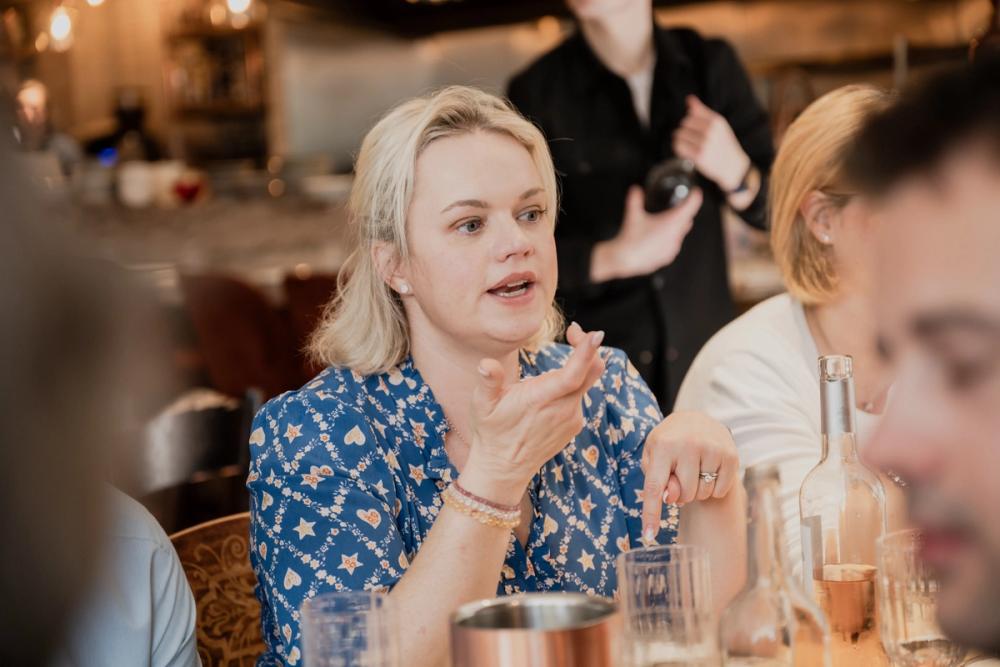
What was your perception of Provence rosé before the tour in terms of its diversity, versatility and quality?
My perception (misplaced!) was that Provence rosés bought in many supermarkets in the UK wasn’t that diverse in terms flavour and style. I thought it was diverse in its visual style, bottle shape for instance but this made for perceived over pricing to quality experienced. As a category I believed rosé to be versatile but I never saw Provence rosé in this way.
Did that change at all after tasting so many wines during the day? If so how?
As a lover of rosé wines I was thrilled to come along but I always saw Provence rosé as more of a statement wine. This misperception changed during the day. I was blown away with the variety of colours, styles and flavours from both gastronomic to easy drinking that we tasted.
What do you see as Provence rosé's big point of difference and what it should look to build on?
Provence rosé is alive and thriving in the consumer zeitgeist of summer drinking. Its biggest point of difference is the collective pull to consumers this category has in compared to other rosé wines from other regions and countries. In order to continue to harness that brand awareness I believe they will need to look at continued premiumisation of the category and education of these wines.
Does it need to do more to explain the complexities and the differences there are between the different appellations and styles of wine?
Yes. Absolutely, much like there is a good awareness of the basic Bordeaux styles and categories there should be the same education of the region. A formalised approach/body to explain to an engaged consumer why they should keep their focus on the category. An invested consumer of wine is usually keen to back their love of a style with knowledge in my experience.
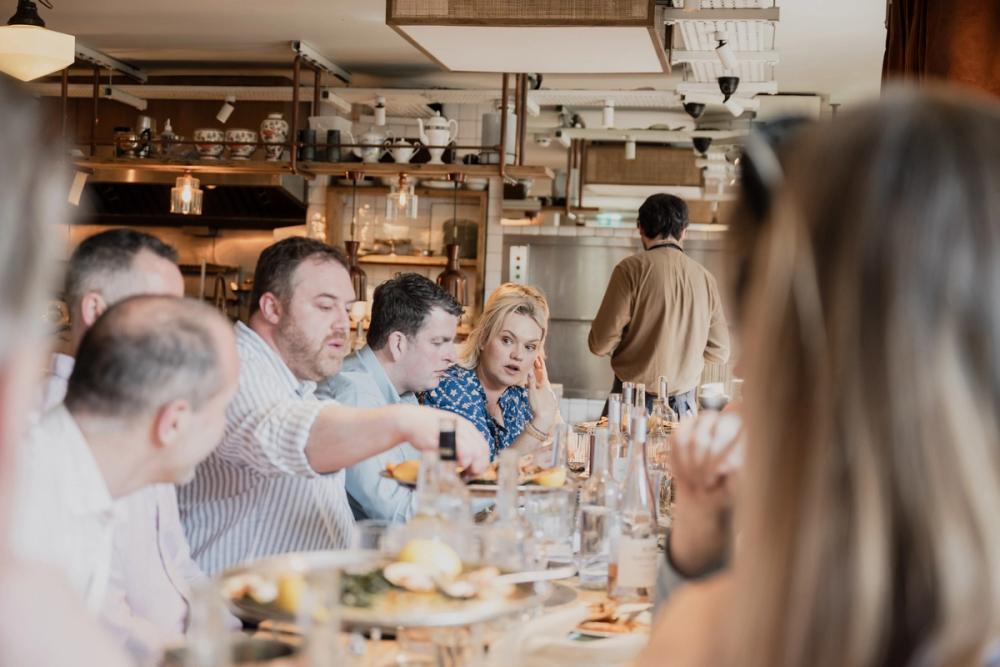
Abbie Bennington sharing her views on how Provence rosé wines work as part of her corporate tastings programme
Are you more likely to talk about Provence rosé wines as a result of being on the tour - and if yes which styles in particular?
Yes again, in fact following our tasting a corporate client wanted to swap out a favoured and much talked about Provence brand from a line up for something with more prestige in the region. The next ‘big thing’ in the region.
Which food and wine matches did you think were particularly successful?
The variety of wine styles and food styles we tasted on face I wasn’t sure would work initially. But once again the versatility of the category won through in many different settings.
What did you think of the restaurant tour concept?
We often talk about and taste as professionals about wine in imaginary food pairing scenarios. This type of tour brings the concept into reality and is a great way to explore food and wine combinations that would take someone months of dining out to experience. In short it’s a great way to experiment and discuss with others what works, what doesn’t and take on board their experiences in the mix. A great concept!
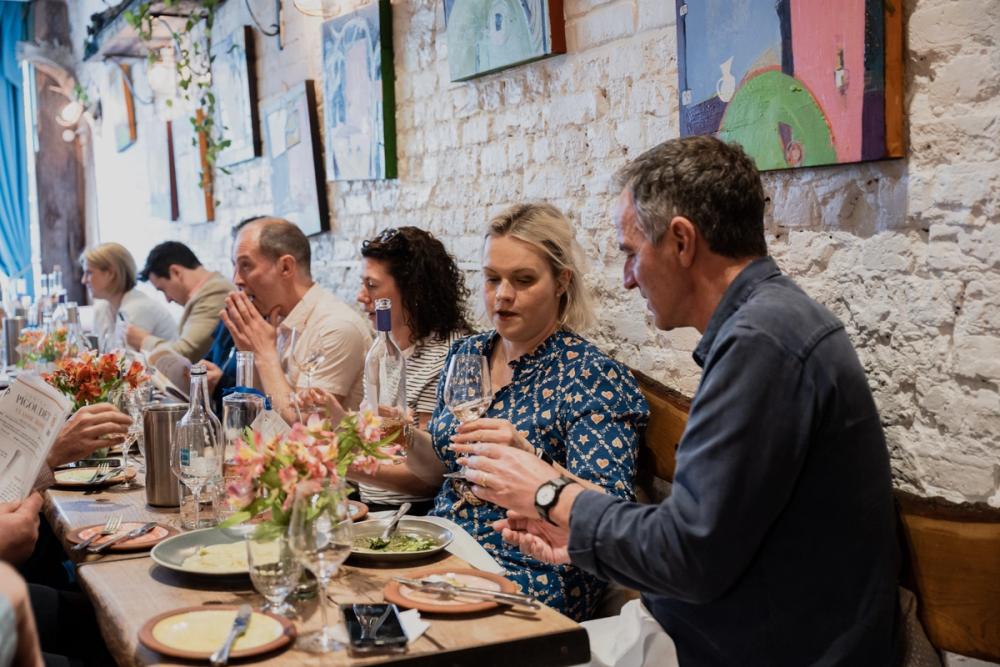
Abbie Bennington and Richard Leaver sharing food and wines at Rabbit
Peter Doherty, brand manager,Hallgarten & Novum Wines
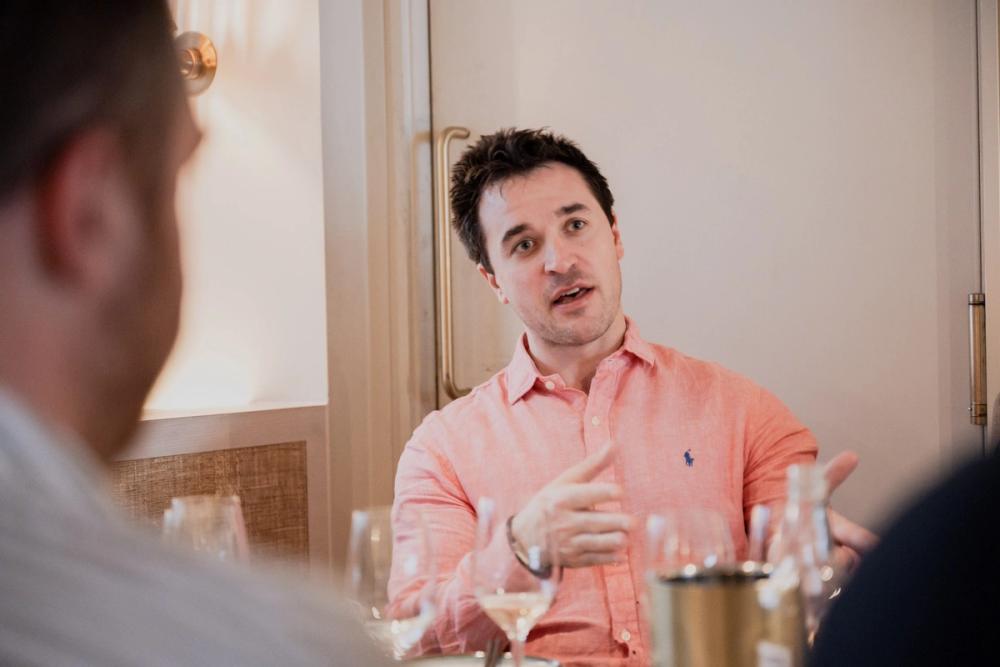
What was your perception of Provence rosé before the tour in terms of its diversity, versatility and quality?
Working for a wine importer Provence has always been an important part of our portfolio, as such we have always had multiple Provence rosés at different price points, styles and quality levels to cater for the market. Therefore I have known what a diverse region Provence is and the various styles and quality levels it is able to produce.
What do you see as Provence rosé's big point of difference and what it should look to build on?
Provence rosé’s USP is its perceived prestige due to the lifestyle image that it portrays whilst being accessible to all. It shouldn’t try and change this.
Does it need to do more to explain the complexities and the differences there are between the different appellations and styles of wine?
No, by adding complexity, this will confuse the general consumer and I think draw them away from the category and give a superiority complex to the region, which happens a lot in traditional French regions such as Bordeaux, Burgundy and the Rhône Valley, which is why lesser known appellation suffer with sales.
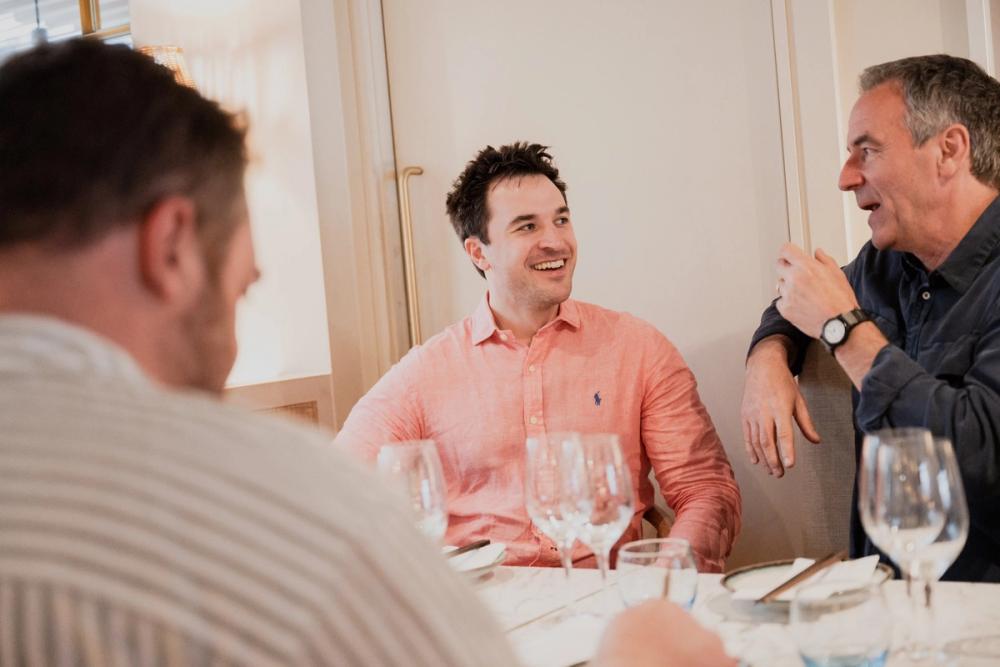
Peter Doherty with Richard Leaver
Which food and wine matches did you think were particularly successful?
The food at the second restaurant Chicama worked particularly well such as the grilled sea food platter as the wines, as the food was light enough not to be too overpowering, but worked with some of the more medium bodied rosés that needed something more significant to match with.
What did you think of the restaurant tour concept?
I loved it! It was a unique concept that kept everyone engaged and made sure to show the diversity of the category with the multiple food pairings.
- Thanks to Vins de Provence for the support in hosting the Rosé Restaurant Tour. You can find out more about Provence wines at Vins de Provence website here.
- You can read Part 1 of The Buyer Provence Rosé Restaurant Tour here.
